Sol Summary – April 18th
Crew 297 Sol Summary Report 18-04-2024
Sol: 04
Summary Title: stanleY yelnatS tuanortsA
Author’s name: Pawel Sawicki
Mission Status: Nominal
Sol Activity Summary:
Today we opened our eyes to a welcomed Martian morning partially filled with clouds. These clouds proved to be fortuitous during the later EVAs in reducing sun glare on screens and the need for respiration during digging. Today’s EVA was a first for our robotic crewmate Case. Case, roughly the size of its distant Martian cousin, Sojourner, has the intention of helping us take useful Martian imagery for planning purposes of future crews. Today was also the first time we had four crewmates involved in the same EVA and the first true attempt at digging the NPS. Case was able to capture useful imagery of the surroundings, yet, it was not able to take off its metaphorical leash, needing to be monitored constantly and manually driven for a large portion of its adventure. The other two EVA crew mates had great success – digging a hole suitable for the NPS at a rate of 30 cubic feet per hour. Two hours had passed before the rover and related GSE were collected, the hole was filled up, and we started heading back home. When the crew finally recovered from the eventful EVAs they learned about the functionality of WIDGIT and how to incorporate it into their collaborative report writing workflows. FInally, a savory Japanese curry dish was prepared and served by Chef Sean to the delight of the crews’ taste buds.
Look Ahead Plan:
Tomorrow we will have a chock-filled day of EVAs from 0900 to 1600. The first EVA will look to locate the NPS that has thankfully been placed by Mission Support for us. After they successfully find the NPS, they will provide the favor to the second EVA crew of hiding the NPS. The second EVA crew will then attempt to find the NPS with enough time to spare for additional gamma-ray spectral readings of the Martian rocks in the surrounding area.
Anomalies in work:
Suit 5 (ventilation electrical connection): Investigated and likely fixed. To be further examined/tested in the coming days.
GreenHab automated fan: The GreenHab fan powers on when the GH temp reaches 94F, but then shortly thereafter turns off. It power cycles continuously but never reaches its expected rpm.
Suit 4 (collar cable ring missing): Fixed today, will be functionally tested during EVA tomorrow.
ScienceDome: We have noticed a foul chemical smell. Dispositioning.
Weather:
Morning (data from 0900): calm winds (6 mph), chilly (57F), and partially cloudy
Noon: calm winds (3 mph), warm (67F), and sunny
Afternoon (1800): calm winds (8 mph), warm (74F), and broken cloud coverage
Crew Physical Status: Crew health is nominal.
EVA: Nominal EVA. The crew of four involved with the EVA was able to test digging capabilities within their spacesuits and use the rover, Case, to capture MDRS site imagery.
Reports to be filed:
Sol Summary
Journalist Report
GreenHab Report
Operations Report
EVA report (1 EVA)
EVA request (1 EVA)
Support Requested: We have requested that the [inert] NPS be placed by Mission Support at a location of their choosing (though reachable by rover and within a maximum of 15 minutes of walking) in either Candor Chasma, Eos Chasma, Valles Marineris, or Aurorae Chaos for a search and recovery EVA #6 on 19-04-2024. The NPS will be placed in the rear airlock tomorrow night, 18-04-2024 by 1600. Once the inert NPS is hidden, precise GPS coordinates and a photo are requested to be taken to not lose track of the location. These GPS coordinates are then asked to be sent to Pawel.
We also request to have the permission for Opportunity to be plugged in after EVA #6 tomorrow for one hour (1200-1300) between EVAs to extend its range.
GreenHab Report – April 18th
Crew 297 GreenHab Report 18-04-2024
GreenHab Officer: Sean Marquez
Environmental control:
– Heater on (set to 55F)
– Fan on
Average temperatures: 80F
Hours of supplemental light: N/A
Daily water usage for crops: 3 gal
Daily water usage for research and/or other purposes: 0 gal
Water in Blue Tank: 188 gal
Time(s) of watering for crops: 11:30
Changes to crops: Radishes and red cabbages were still looking a bit wilted, but less so than yesterday. Carrots and the two (Riya & Garbanzo) kale plants no longer appear wilted.
Narrative: Fan was on full power at the time of watering, but due to power outages throughout the day, the GreenHab door was purposefully left open again between 16:10 to 19:00 to allow for air flow from the tunnel system to try and prevent the GreenHab from overheating. Brown leaves from cherry tomatoes, kale, and squash were composted. Vines from a squash plant were found strangling a neighboring cherry tomato plant, which then had to be separated and placed along an adjacent trellis.
Harvest:
– 4g cherry tomato
Support/supplies needed: N/A
Operations Report – April 18th
Crew 297 Operations Report 18-04-2024
SOL: 4
Name of person filing report: Matt Lynch (Engineer)
Non-nominal systems: Suit 2 (stuck valve), Suit 9 (broken visor), Radio 2 (likely damaged antenna)
Notes on non-nominal systems: The issues with Suit 2 and 9 were already noted before our mission. The issue with Suit 4 was fixed today. Fixes were attempted with Suit 2, however the two valve components are extremely stuck together. We propose drilling/sawing out the jammed valve, this will destroy the stuck component, but enable us to salvage the remaining pieces and return Suit 2 to functional operation. See below for specifics on Radio 2.
ROVERS
Spirit rover used:
Hours: 251.6
Beginning charge: 100%
Ending charge: 61%
Currently charging: No
Curiosity rover used:
Hours: 278.0
Beginning charge: 100%
Ending charge: 66%
Currently charging: No
General notes on rovers: NA
Summary of Hab operations: 1 bag of non-burnal (NB) trash for pickup
WATER USE: 46.9 gallons
Water (static tank): 333.1 gallons
Static tank pipe heater (on or off): off
Static tank heater (On or off): off
Toilet tank emptied: yes
Summary of internet: Looking up recipes, downloading entertainment, downloading navigation applications, report formatting methods, catching up on Earthly news
Summary of suits and radios: Comms issued occurred with Radio 2 on EVA, diagnostics back at the hab revealed a likely damaged antenna as the cause but we were unable to fully recreate the problems
Radios 1,2,5, and 6 were used.
EVA Suits 1,4,6, and 7 were used.
Summary of GreenHab operations:
WATER USE: 3 gallons
Heater: Yes
Supplemental light: N/A
Harvest: 4g of cherry tomatoes
Summary of ScienceDome operations: A noxious sulfur-like smell has been noted in the ScienceDome, likely coming from the BioReactor experiment being autonomously performed there from a previous crew. This smell was not noticed the first two sols of this mission.
Summary of RAM operations: (Tools used, work done): Wrenches, mallets, and other tools were used in performing Suit repair.
Summary of any observatory issues: NA
EVA Report – April 18th
Crew 297 EVA Report 18-04-2024
EVA #5
Author: Pawel Sawicki (Commander)
Purpose of EVA: This EVA will kick off the human-interaction study from CU Boulder (COHRINT Lab), where two crewmates will use the User Interface (UI) to monitor and interact with the robot as it traverses and records imagery of the relatively flat terrain. Thus it will also be the first time Case (the name of the robot) touches Martian regolith. The other half of the EVA crew will be in the vicinity (visual and audio site maintained) testing digging techniques that may be used to bury the [inert] NPS. Any dug-up holes will be filled in before the end of the EVA.
Start time: 9:50am
End time: 11:53am
Narrative: Today’s EVA was a first for the crew for many reasons. It was the first time we had four crewmates involved in the same EVA, the first time that Case got to test itself out on Martian regolith, and the first true attempt at digging the NPS. With four EVA members, Case (along with Case’s GSE), and a medley of digging tools, the exit via airlock took longer than nominal. Entrance into the Martian atmosphere required 5 minutes of depressurization so that two crewmates could leave along with the tools and the rover, 5 minutes of pressurization again, and finally 5 minutes of depressurization so that the remaining crewmates could exit. We finally arrived to our destination near Cow Dung Road approximately 26 minutes after first entering the airlock, determined to meet all our EVA objectives. Case was able to capture useful imagery of the surroundings, yet, it was not able to take off its metaphorical leash, needing to be monitored constantly and manually driven for a large portion of its adventure. The other two EVA crew mates had great success – digging a hole suitable for the NPS at a rate of 30 cubic feet per hour. Two hours had passed before the rover and related GSE were collected, the hole was filled up, and we started heading back home.
Destination: 920 m South (185°) of MDRS
Coordinates (use UTM WGS 84): 12S 518058N 4250031E
Participants: Pawel Sawicki (Commander), Matt Storch (XO), Matt Lynch (Crew Engineer), Dave Laude (Journalist)
Road(s) and routes per MDRS Map: Cow Dung Road
Mode of travel: Driving 2 rovers (Curiosity & Spirit) and walking
Crew Photos – April 18th
Journalist Report – April 18th
Crew 297 – Janus 1 Journalist – David Laude
Janus 1’s first double EVA on Sol 4, taken on another beautiful Martian day by two teams of two. One team manned by both Matts worked on burying the nuclear reactor in regolith, while at the same time Pawel and Dave got practice with the robot system provided by Nicholas Conlon of CU Boulder.
The two Matts took turns digging until after 54 minutes of toil they had a hole big enough to hold the entire mock reactor. A few issues came up along the way including Matt’s (does it matter which one?) communications head piece that slid of his head until repositioned. That’s part of the learning in sim experience. Afterwards, they removed the reactor and covered up the hole. We will hear more about the reactor in future reports.
Meanwhile Pawel and Dave set up the mobile robot, named "Case", after a robot from sci-fi movie "Interstellar". The process was long, due to our not having done it before, but it worked the first time. Pawel did the driving from a laptop while Dave walked along with his new friend Case, while watching for obstacles. Case can be programmed from the laptop to drive a particular course, but sometimes Pawel had to manually drive it from his laptop computer.
The main goal of the study with Case is to understand how future astronauts, in current real-world robotic applications, where users rely heavily on telemetry, map data, and intuition in order to infer how competent a robot will be in a given environment. Telemetry can consist of a variety of data, however in our experiments, telemetry will include the robot’s position, heading, velocity, battery level, and other state information. Map data consists of a displayed map with iconography indicating features such as positions of the robot, waypoints, hazards, and other relevant information. This information, while valuable, can be confusing for non-expert users whose mental model of the robot’s competence is incomplete or inaccurate, tedious to follow and monitor, and can lead to poor human decision-making. Instead, this research focuses on developing more human-centered approaches to convey robot competency.
In an unusually productive day, Sean and Matt S. also gave the rest of the crew an introduction to their software based "Toolset for Shared and Long-term Document Management and IT Operations". More on this in a later journalist report.
Today’s person of interest is Executive Officer Matthew Storch. He has B.S. and M.S. degrees in electrical engineering from Stevens Institute of Technology and a Ph.D. in computer science from UIUC. He has worked as a software engineer and has held various engineering management positions for 35 years He is currently acting VP Engineering and CTO of a small (30 person) company that is building a specialized physical infrastructure management product (target audience is large corporations and government institutions). Outside of work, Matthew has a long-standing passion for adventure, technical achievement and unusual experiences that has led him to becoming an airplane pilot, a gyroplane pilot, sailboat & powerboat operator, and a submersible pilot.
GreenHab Report – April 17th
Crew 297 GreenHab Report 17-04-2024
GreenHab Officer: Sean Marquez
Environmental control:
– Heater on (set to 55F)
– Fan on
Average temperatures: 91F
Hours of supplemental light: N/A
Daily water usage for crops: 5.25 gal
Daily water usage for research and/or other purposes: 0.25 gal
Water in Blue Tank: 191 gal
Time(s) of watering for crops: 11:34, 12:33, 15:18
Changes to crops: Carrots, radishes, and red cabbages were looking wilted. Two of the (Riya & Garbanzo) kale plants were looking less wilted compared to the prior two days.
Narrative: Crops that were wilting today were likely due to EPS fluctuations, causing inconsistent air flow from the fan system in the GreenHab throughout the day. While watering the plants around 15:18, the GreenHab temperature had reached 110F. In an attempt to supplement the lack of air flow and reduce heat build up in the GreenHab, the door was opened around 16:00 to allow for the tunnel system to act as a temporary air conduit, at least ’til around sunset when the door was closed.
Harvest:
– 288g squash
– 2g cherry tomato
Support/supplies needed:
– (more of a nice to have, but) a means to query and download the GreenHab atmosphere temperature data from HomeAssistant as to be able to perform time-series analysis, automation of calculating average temperatures, and/or for comparison with the FPrime data collection system.
Operations Report – April 17th
Crew 297 Operations Report 17-04-2024
SOL: 3
Name of person filing report: Matt Lynch (Engineer)
Non-nominal systems: Suit 2 (stuck valve), Suit 9 (broken visor), Suit 4 (missing metal tie on rear of helmet collar)
Notes on non-nominal systems: The issues with Suit 2 and 9 were already noted before our mission. The issue with Suit 4 was found today, spare parts are being looked for and if they are not found a zip tie can be used as a temporary fix.
ROVERS
Spirit rover used:
Hours: 251.1
Beginning charge: 100%
Ending charge: 38%
Currently charging: No
Curiosity rover used:
Hours: 180
Beginning charge: 100%
Ending charge: 56%
Currently charging: No
General notes on rovers: NA
Summary of Hab operations:
WATER USE: 20.4 gallons
Water (static tank): 380 gallons
Static tank pipe heater (on or off): off
Static tank heater (On or off): off
Toilet tank emptied: no
Summary of internet: Looking up recipes, downloading entertainment, downloading navigation applications, report formatting methods, catching up on Earthly news
Summary of suits and radios:
Radios 1,2,5, and 6 were used.
EVA Suits 4,7, and 11 were used.
Summary of GreenHab operations:
WATER USE: 5.25 gallons
Heater: Yes
Supplemental light: N/A
Harvest: 288 g of suspected squash and 2 g cherry tomato
Summary of ScienceDome operations: NA
Summary of RAM operations: (Tools used, work done): NA
Summary of any observatory issues: NA
Sol Summary – April 17th
Crew 297 Sol Summary Report 17-04-2024
Sol: 03
Summary Title: Red Planet Rocks!
Author’s name: Pawel Sawicki
Mission Status: Nominal
Sol Activity Summary: The crew started the day at 0800, welcomed by the smell of the delectable crepes prepared by Sean and Matt S. With the mood already in good spirits after breakfast, the EVA team could not flounder, as they hastily were able to locate the NPS and spent the rest of the time analyzing the rocks of the Red Planet. After a fortunate EVA, the crew was treated to a mouthwatering take on fromage et legumes soup prepared by Matt L. While the soup was prepared, the crew learned how to play the cooperative card game Hanabi. In the afternoon, Sean and Pawel troubleshooted thermal problems within the GreenHab along with harvesting a ripe cherry tomato. Dinner concluded a day of scrumptious meals, with a soy peanut couscous containing vegetables and chicken, prepared by chefs Matt L. and Sean.
Look Ahead Plan:
Tomorrow we will perform a single EVA in the morning. This EVA will be the first for Case, our robotic crewmate, who will traverse and record imagery as we monitor closely. The EVA will also test out digging possibilities for the [inert] NPS.
Anomalies in work:
Suit 5 (ventilation electrical connection): Investigated and likely fixed. To be further examined/tested in the coming days.
GreenHab automated fan: The GreenHab fan powered on today when the GH temp reached 94F, but then turned off. It then powered cycled continuously but never reached its expected rpm.
Suit 4 (collar cable ring missing): In work
Weather:
Morning (data from 0900): calm winds (2 mph), chilly (53F), and clear skies (0% cloud coverage)
Noon: moderate winds (15 mph), warm (70F), and clear skies (0% cloud coverage)
Afternoon (1800): moderate winds (17 mph), warm (76F), and clear skies (0% cloud coverage)
Crew Physical Status: Crew health is nominal.
EVA: EVA was nominal today. The crew found the hidden NPS fairly quickly (~15 minutes) and spent the rest of the time performing gamma-ray spectrometer readings of regions along Cow Dung Road south of MDRS including Robert’s Rock Garden.
Reports to be filed:
Sol Summary
Journalist Report
GreenHab Report
Operations Report
EVA report (1 EVA)
EVA request (1 EVA)
Support Requested: We request that the [inert] NPS be placed by Mission Support at a location of their choosing (though reachable by rover and within a maximum of 15 minutes of walking) in either Candor Chasma, Eos Chasma, Valles Marineris, or Aurorae Chaos for a search and recovery EVA on 19-04-2024. The NPS will be placed in the rear airlock tomorrow night, 18-04-2024 by 1600. Once the inert NPS is hidden, precise GPS coordinates and a photo are requested to be taken to not lose track of the location. These GPS coordinates are then asked to be sent to Pawel.




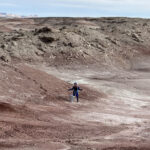

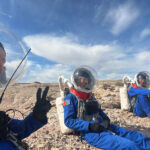
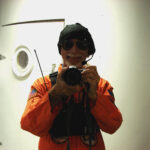
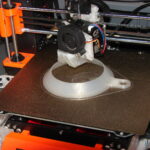
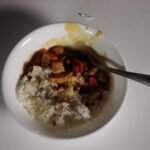
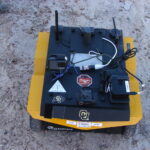

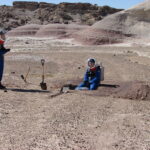
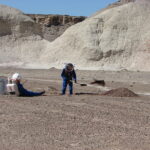
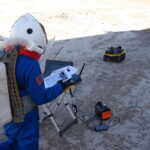
You must be logged in to post a comment.